Staghorn Sumac
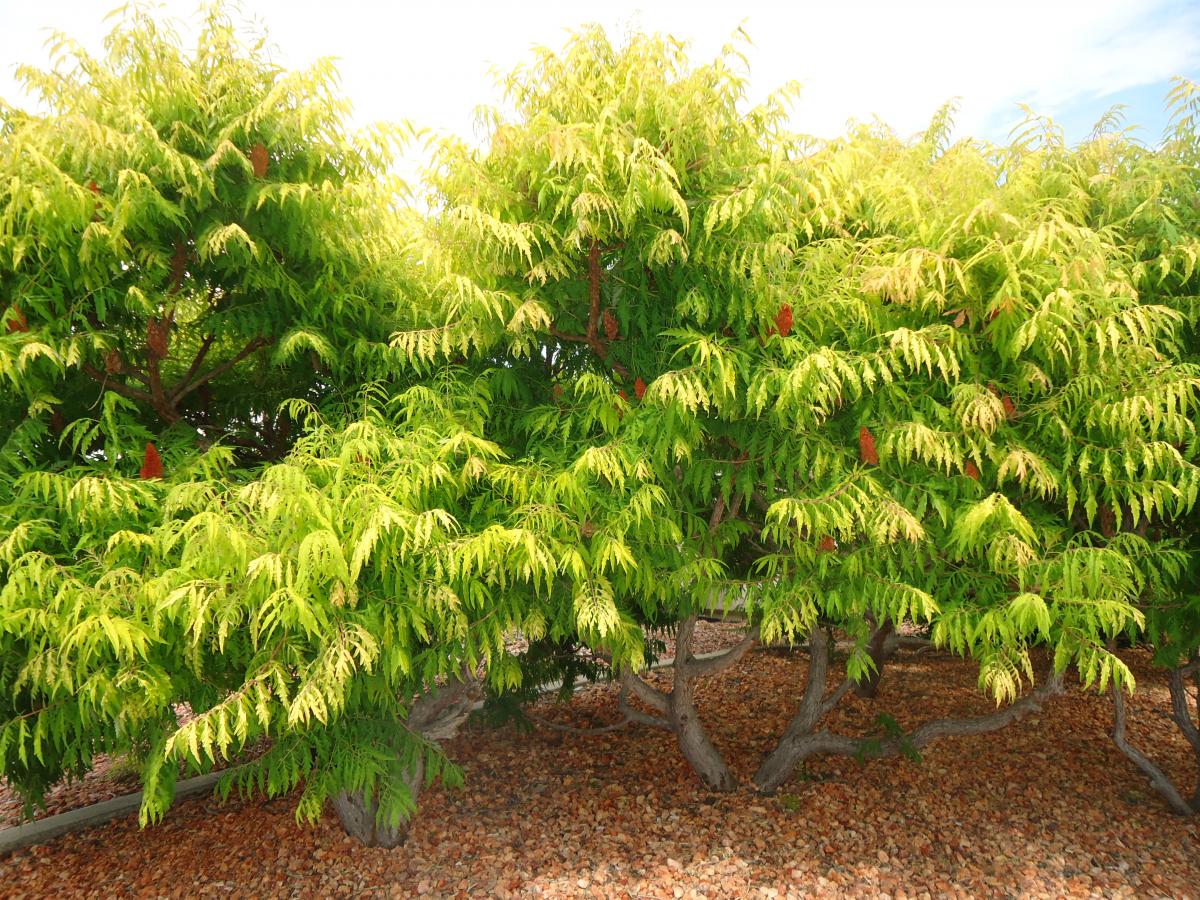
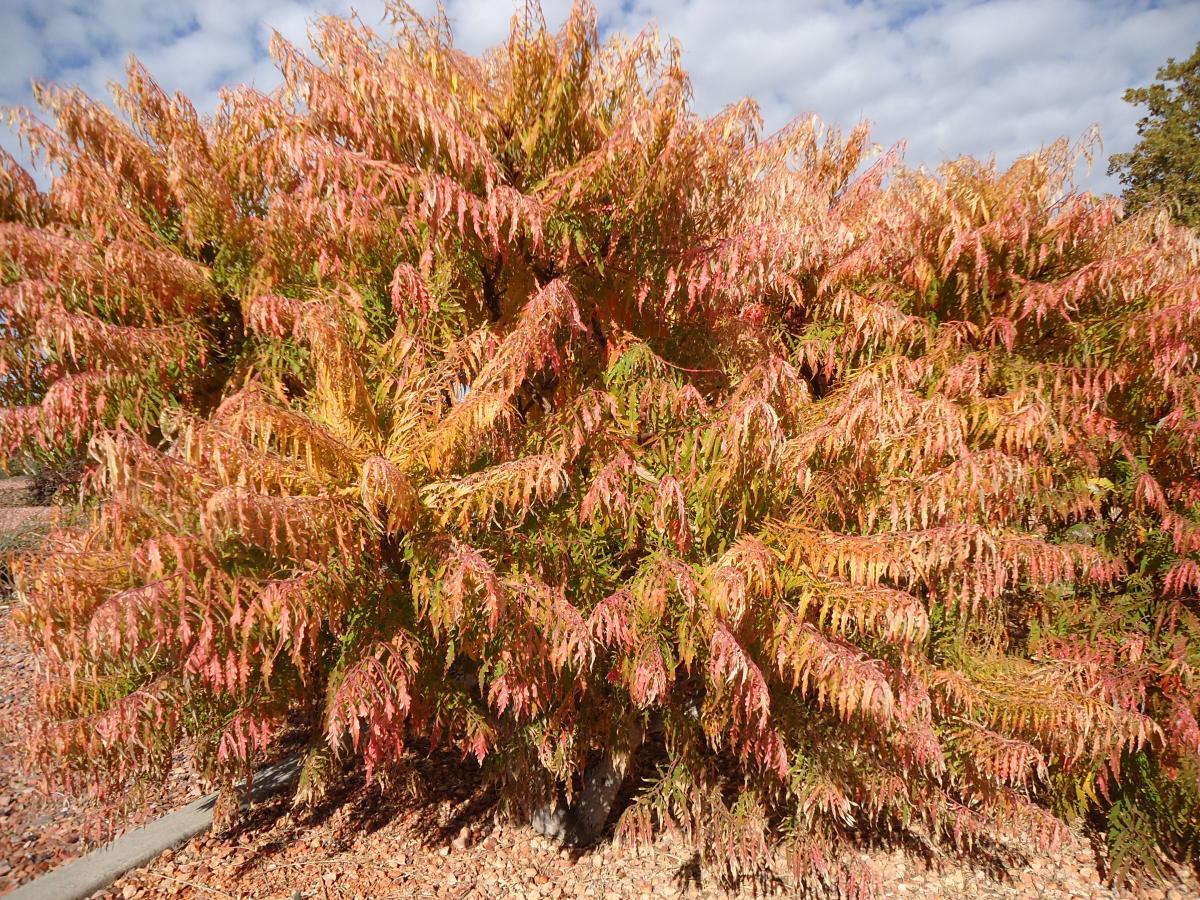

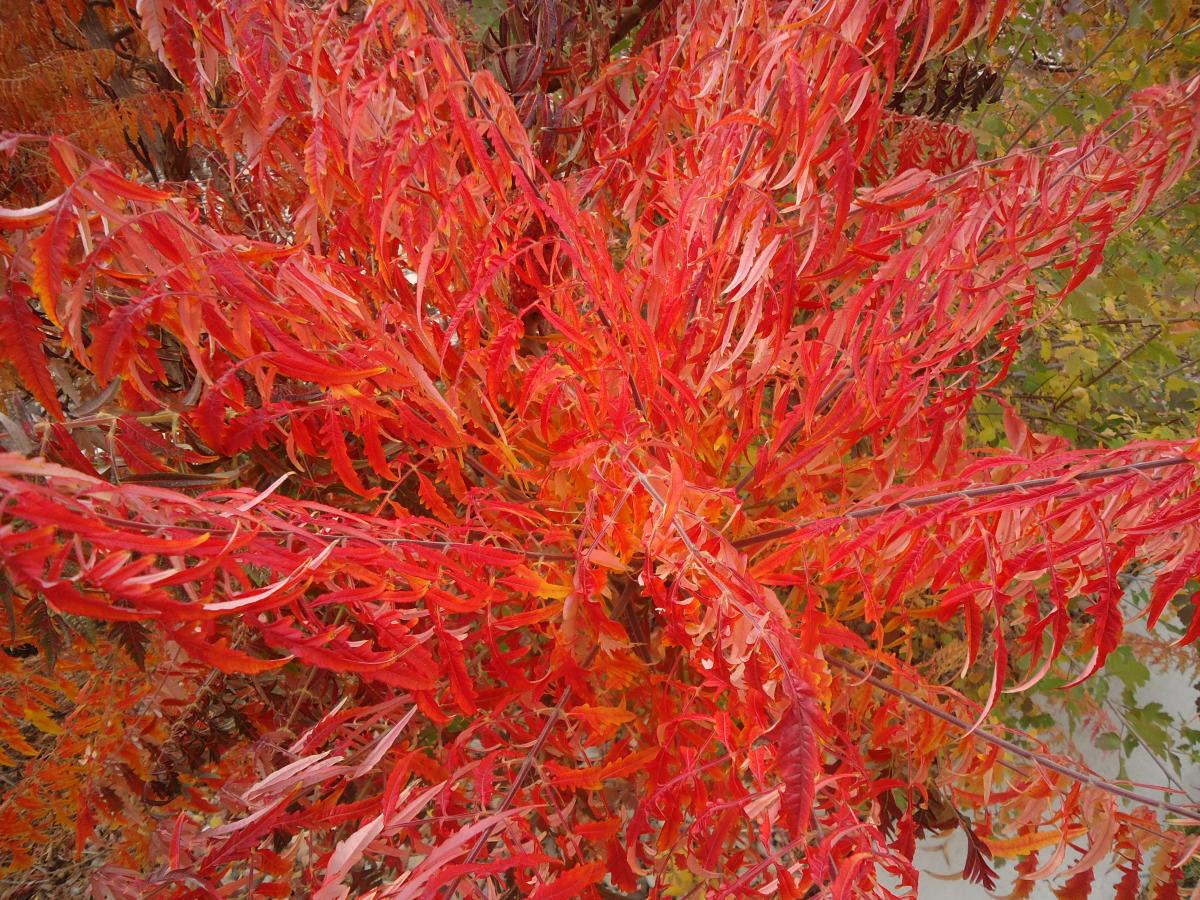
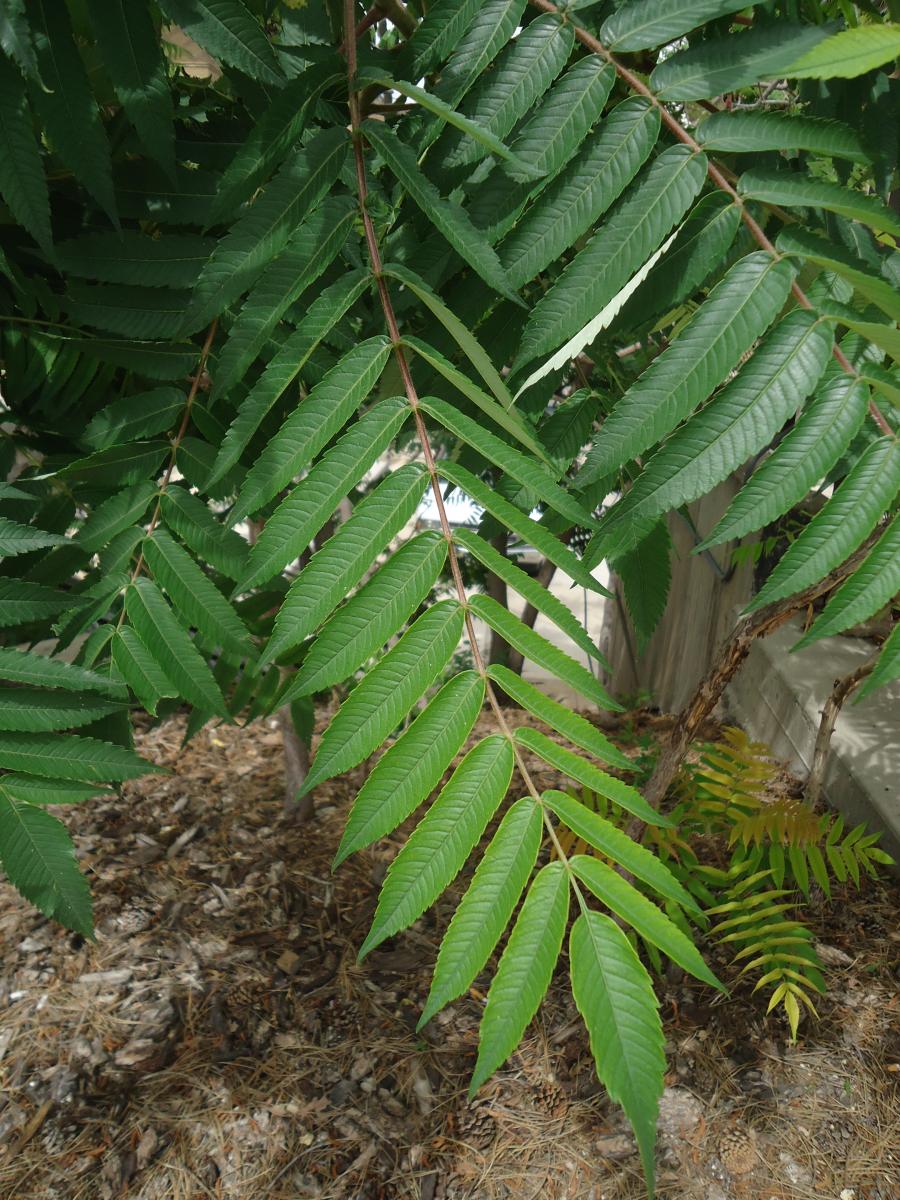
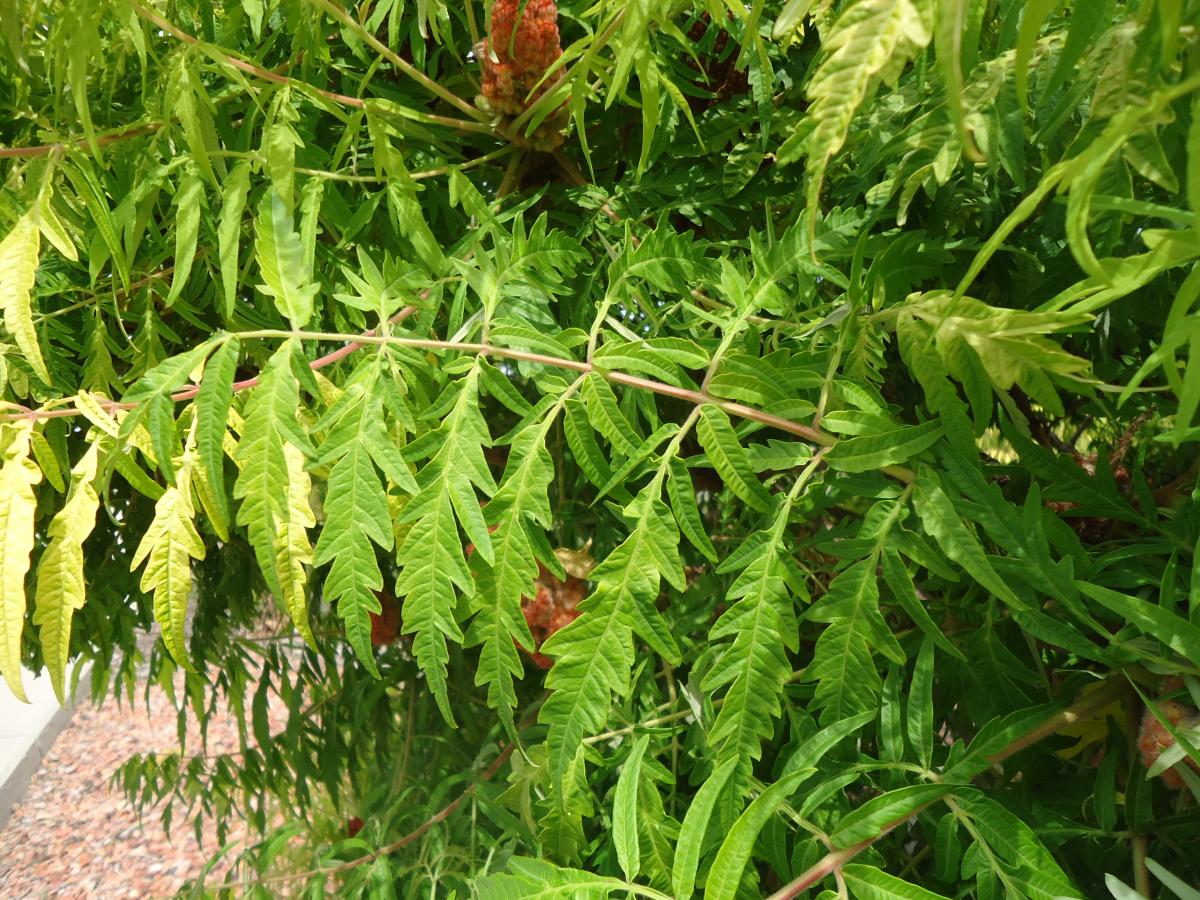

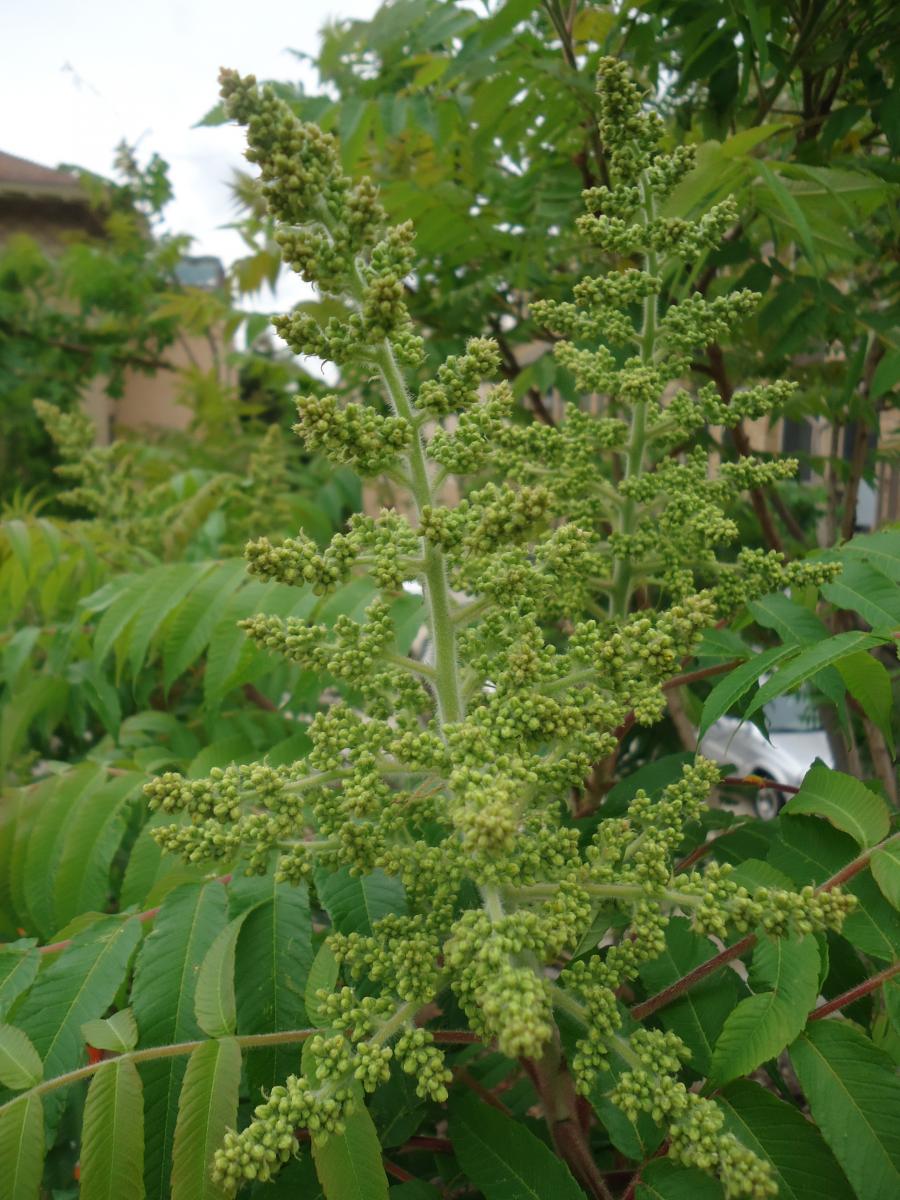
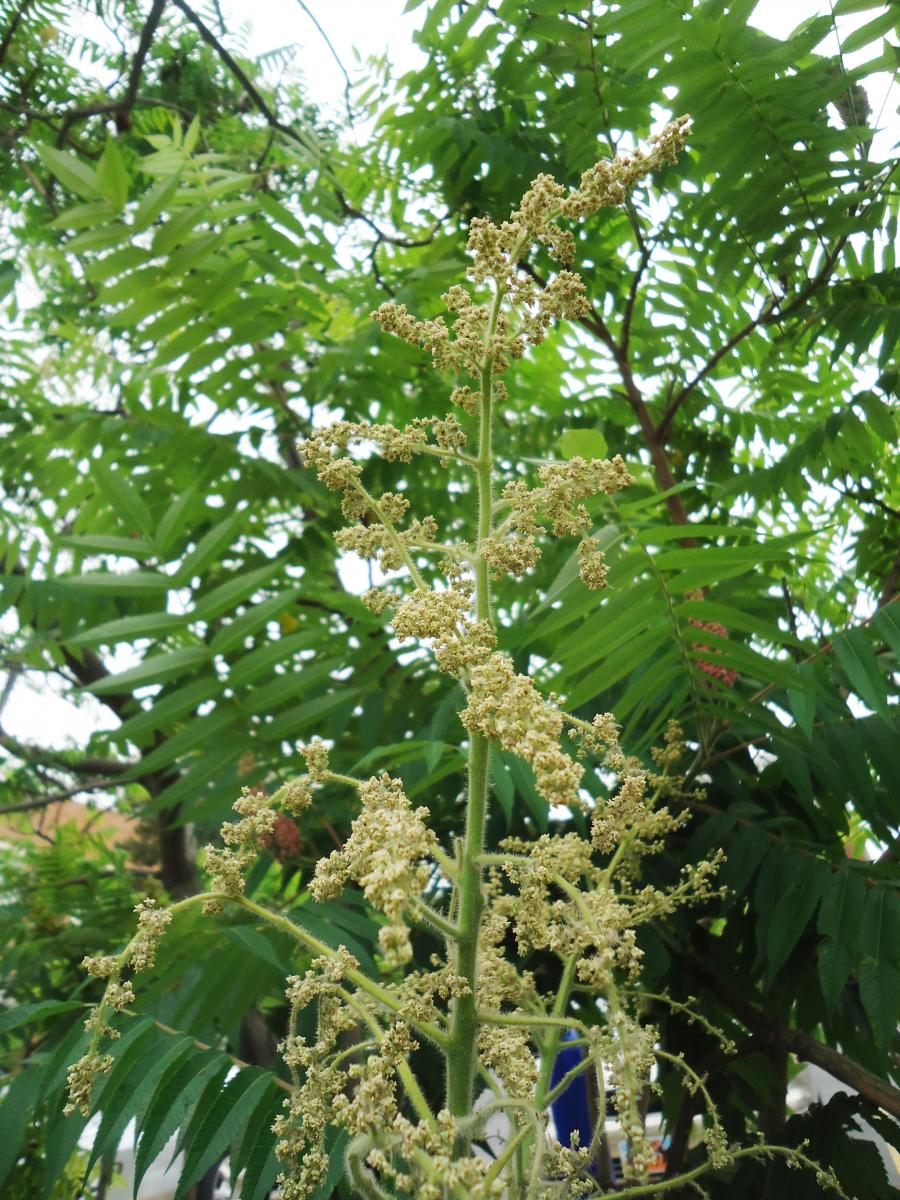
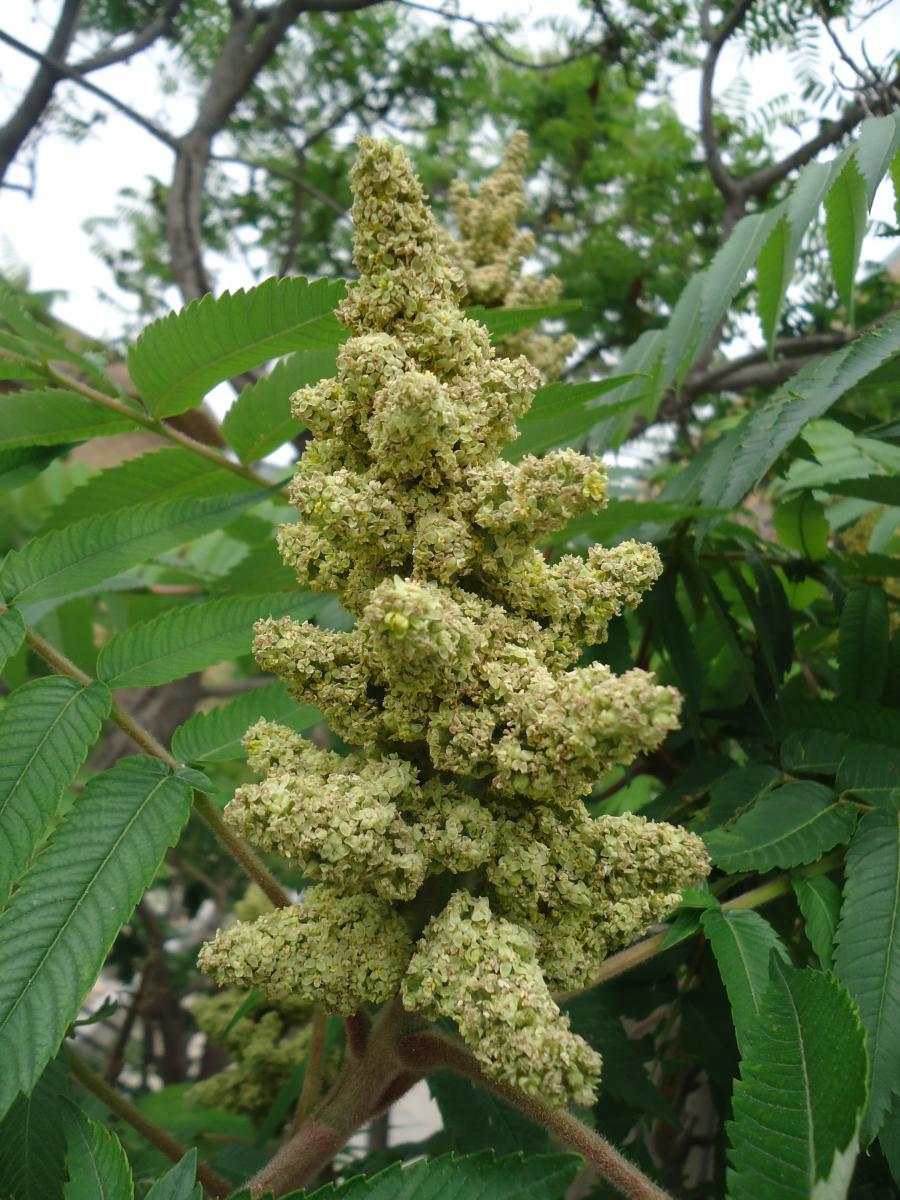
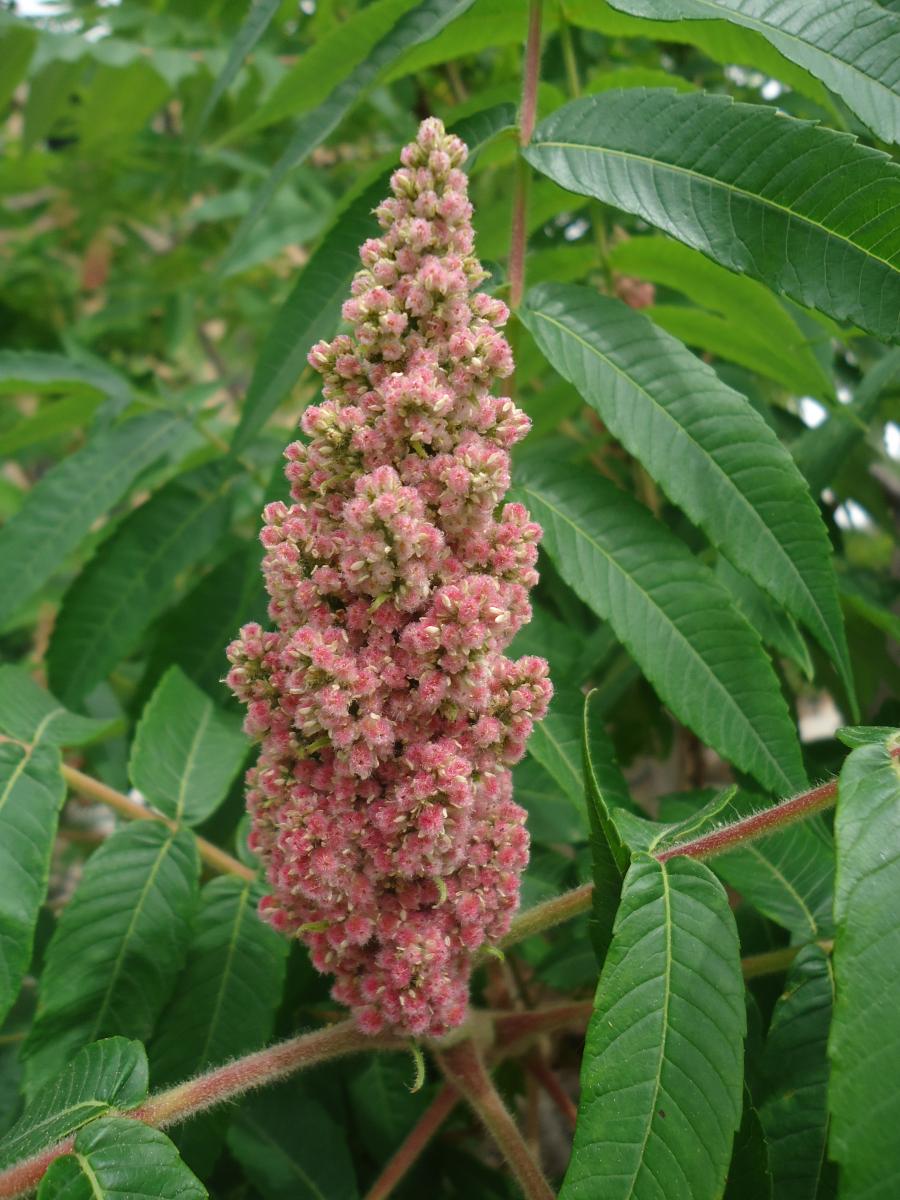
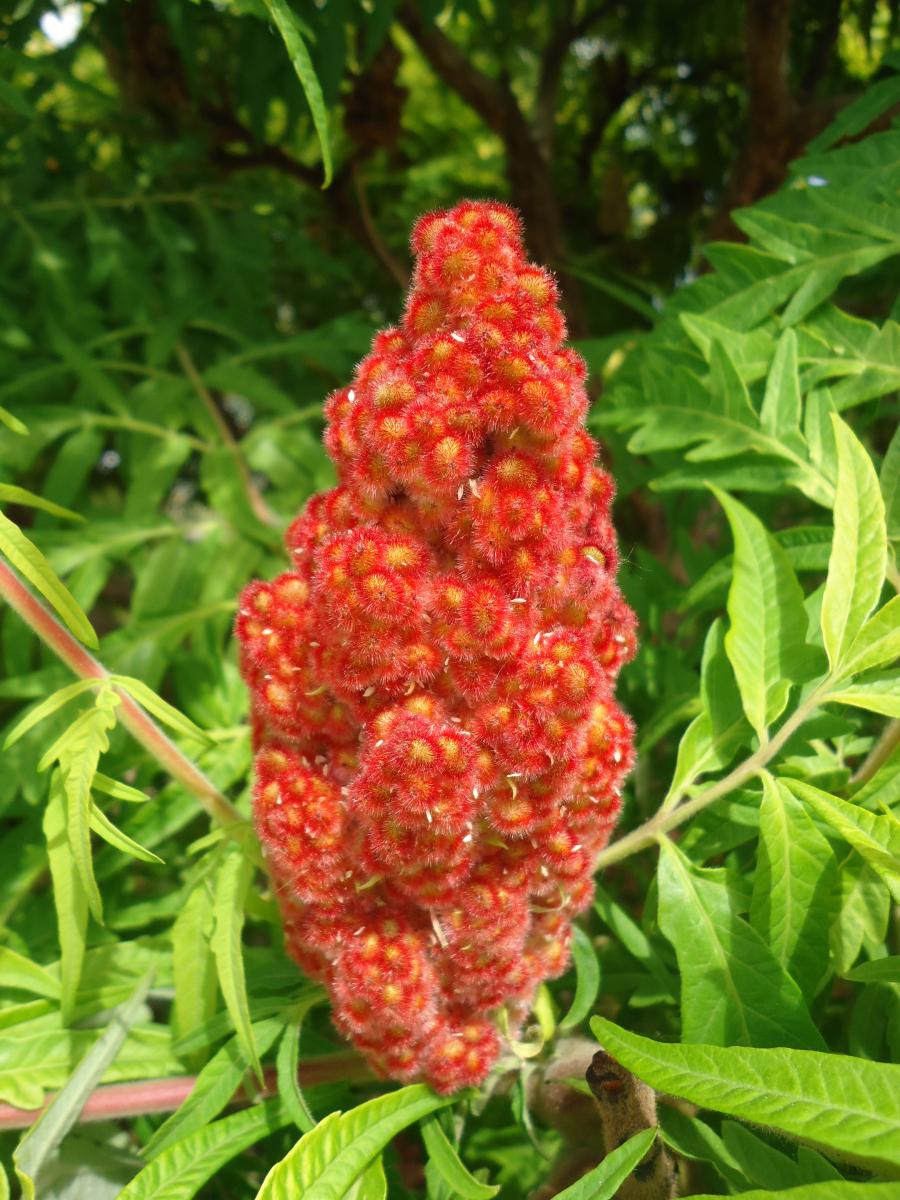



Rhus typhina
Leaves: Deciduous. Entire compound leaf is 1 to 2 feet long, with 13 to 27 leaflets, most often 19. Each leaflet is narrowly oblong with a sharp point, 2 to 5 inches long, 1 to 2 inches wide, and serrated on the leaf edge. Leaves emerge late in the spring. Bright green color in summer. Spectacular yellow, orange, and scarlet color in the fall.
Bark/Twigs: Older stems are gray and relatively smooth. Twigs and younger stems are very characteristic and densely velvety, reddish brown color, and hairy.
Flowers/Fruit: Greenish yellow flowers borne in dense hairy clusters (panicles) 4 to 8 inches long in June to early July. Dioecious - both male and female plants. Fruit is a crimson colored densely hairy berry (drupe), closely packed in a pyramidal cluster (panicle). Becomes duller and darker red with cold weather.
Mature size and shape: Small. 15 to 25 feet high x equal spread. Large, loose, open spreading shrub or scraggly tree with a flattish crown and picturesque branches resembling the horns on a male deer.
General information/special features: Plant in full sun. Adapted to many soil types, but prefers well-drained soil. Tolerates very dry, sterile soil. In times past Native American Indians made a lemonade-like drink from its crushed fruit and tannery workers used the tannin-rich bark and foliage as a tanning agent.
Landscape use and maintenance: Ornamental tree/shrub. Good for naturalistic, drought tolerant hillsides. Fast growing rate from rootsuckers, slow to medium on old wood. High maintenance from suckers. Easily transplanted.
USDA Hardiness Zone: 3 to 8
Family/Origin: Anacardiaceae - The cashew or sumac family. Canada south to Georgia, Indiana and Iowa. The largest of the North American sumacs.
Campus Use: Somewhat common. Can be found northeast of Marriott Library (Bld 86) or at Carolyn Tanner Irish Humanities Building (Bld 45).
